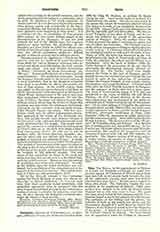

Veszprem, DIOCESE of (VESPRIMIENSIS), in Hungary, suffragan of Gran, one of the sees founded about1009 by King St. Stephen, or perhaps by Queen Gisela, his wife. Later records make no mention of a foundation by the queen. But the see owes much to the queen who caused the beautiful cathedral with its four spires to be built; it was completely destroyed by fire in 1276. Queen Gisela gave rich donations to the church, especially gold and silver plate. She also selected Veszprem as her place of burial, and her example was followed by several of the succeeding queens of Hungary. From the earliest times the bishop possessed the right of crowning the queen, and was, ex officio, her chancellor. The bishopric was one of the richest episcopates in Hungary during the fourteenth century. A celebrated school offered facilities for theological studies as well as for the study of law. When, in 1276, the town was destroyed in the conflicts between the lords of Nemetujvar and those of Csak, the cathedral, the school, and the library were demolished. After the battle of Mollies (1526) the Turks destroyed the possessions of the see; shortly afterwards, the Reformation seriously affected ecclesiastical life. The battles, which were fought against the Turks in this part of Hungary, greatly injured the see; the ecclesiastical and religious life was ruined in spite of the endeavors of prominent bishops like Francis Forgiich, George Lippay, George Szelepcsenyi, and George Szechenyi. It was not until 1686, after the fall of Turkish suzerainty in Hungary, and the conquest of Buda, that better times came. The work of reconstruction began in 1711 and was completed in the reigns of Charles III and Maria Theresa. In 1777 several districts of the diocese were taken away and incorporated in the newly-established sees of Stuhlweissenburg and of Steinamanger. Of the later bishops of Veszprem the following are particularly notable: Martin Biro, one of the most zealous opponents of Protestantism; Joseph Kopocsy (1825-41), afterwards Archbishop of Gran; John Ranolder (1848-75), prominent in public instruction and the education of girls. Since 1888 Baron Charles Hornig is bishop. The diocese consists of the “Komitate” of Veszprem, Zala, and Somogy. It is divided into 5 archdeaneries and vice-archdeaneries. It has 9 active and 19 titular abbeys; 5 active and 12 titular provostships; 226 parishes; 18 monasteries and 23 convents of women with 140 and 228 inmates, respectively. The chapter consists of 12 active and of 6 titular canons; the number of clergy is 358. The diocese has a Catholic population of about 613,477.
A. ALDASY

